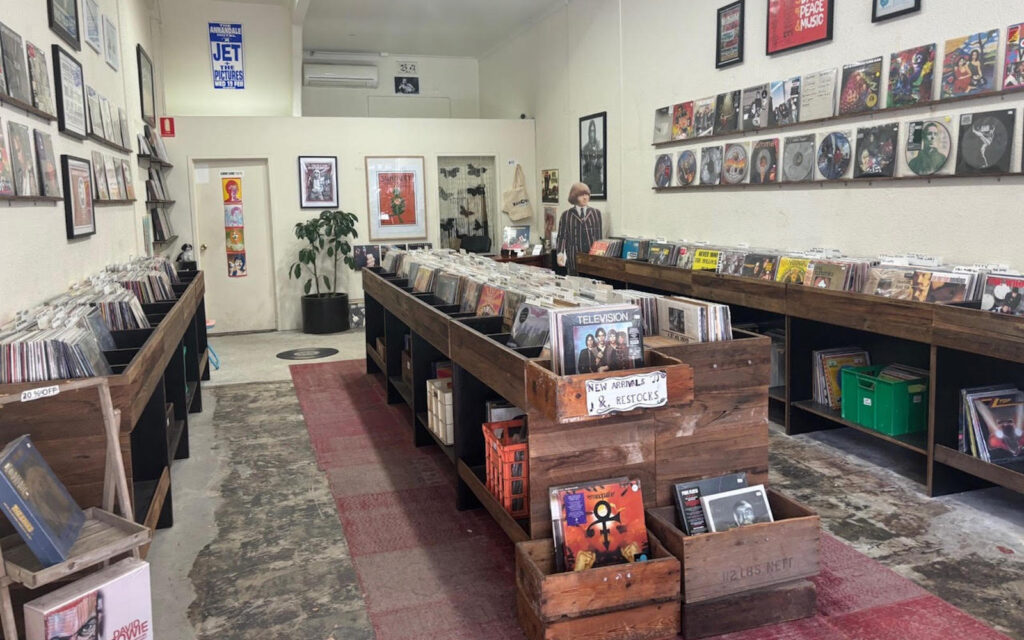It’s no surprise that music came instinctively to Green. “My upbringing was pretty musical,” he says. “My dad’s a folk musician and there were always a lot of people around our house – dudes with beards and banjos! I guess it wasn’t until I grew up a little bit and started getting into what I consider to be the kind of stuff that I then started making. I went to Brighton when I was a teenager and that’s when I really started getting into it. I think it’s around that age that you begin to find your musical identity. Your teens, that’s when you start developing tastes that you follow up on.”
Listen to Green’s eclectic discography bearing this in mind and you’re likely to paint a mysterious image of the man in your mind. Asked about what kind of identity his music is attempting to express, and whether he feels that his music is a reflection of the kind of person he is, he opens up about the role that music has in his life. “I’d like to think so, and it all comes out of me,” he agrees. “I also find that I use music as a very escapist thing. If I haven’t made tunes for a couple of weeks, I start getting a little twitchy, so I need to! I need that kind of energy and to put it into that music. And when a track’s working, you’re riding the high for a couple of days and likewise, when you’re sat there for days and nothing’s coming together, it can be the worst thing. But it’s always this thing with trying to push forward and get a bit of myself out there, I guess. It all comes from somewhere, but I don’t know – I think there’s always something nostalgic in music, that you’re trying to create something that sounds like it’s from somewhere, but you can’t place it, and that’s the thing. Where it comes from, I’m not sure.”
Green’s most recent effort, 2010’s Black Sands, is a testament to his ability to defy the kind of staid, homogenous nature of chillout music’s clichés, a term that’s often associated with his output but hardly does justice to the organic-sounding, meticulously-wrought sounds that define him. Black Sands exists both as home to a string of gorgeous singles, but also an interconnected, immersive whole – one that reviewers across the globe welcomed universally. “I didn’t set out with an agenda, I just carried on with it. It’s not like I have a manifesto like, ‘This is what this album is going to be about’, it’s just a representation of the styles and things I’m into at the time, and in the end, I was pleased with it. There are a couple of guests on there; some of the brass sections, the horns, a couple of the violin players are live. But you never know how things are going to be accepted. I basically sat in a room for a year at four in the morning with some headphones on and you have no perspective on it after a certain amount of time. It’s pretty much all me – I wrote and recorded everything. You finish it, and you think, ‘I like it’, but I honestly can’t even hear it anymore because I’ve been so close to it. It’s not until it’s out and other people are listening to it and telling you what they think that it feels like it’s finished. Once you let it go is when it gets its identity. “
A remixed version of Black Sands is set for release mid-February and the list of artists who’ve jumped on board is enough to make any discerning consumer of electronica a little hot under the collar. Floating Points, Cosmin TRG, Machinedrum – a sign of good taste, clearly. “I just made a list of my favourite producers at the minute that I wanted to get on there. Ninja Tune made a similar list, and we reached out to see who was interested. We got a great response back, and we got some really good people to do it – Machinedrum and Lapalux were incredible, stuff from Brainfeeder – I’m really happy with the way it’s turned out.”
The bass music nerd in me can’t resist the opportunity to talk shop about the kind of sounds represented on this album, and Green is enthusiastic about the kinds of scenes Black Sands: Remixed represents. “It definitely represents what I’m into at the minute. When I DJ, it’s a lot more uptempo than the stuff I make, so I’m playing a lot of that type of post-garage, baseline stuff. And the new record has elements of that in it as well – some of the new stuff I’m working on now is moving into that slightly abstract house area. Ironically, the year I moved to New York from London was the year I started making really London-sounding music! It’s been something I’m definitely moving towards.”
Asked about his move to New York from the thriving scene of London, he admits he hasn’t quite let go, yet. “I still have one foot over there. I have a residency every two months in the London scene which is great,” he says. “I don’t think you realise until you leave the UK how much it informs people outside of it. America and Ibiza, doing shows halfway up the Mississippi in small towns where people are talking about things like Boiler Room and Rinse FM, and kids in the middle of America listening to Pearson Sound podcasts and Hessle Audio. I appreciate how much it influences and informs electronic music at the moment, it’s very diverse.
“It’s a full band with six people, including Andreya, so it’s all live, we’re not playing over beats, we’re playing like a real band and dropping in the electronics as a part of that, another texture, so it is a genuinely live show,” he points out. “Drums, horns, guitars, double bass, Ableton and keys. We go all over the place, strip stuff right down to guitars and keys, build it right up, go more into the DJ-esque field. It’s enjoyable. I’ve got family in Queensland – my dad and sister live up there, so I’m going to see them. But it’s the first time I play live in Australia. I came out and DJed years ago, around 2003 or 2004, but it’s been a long time and a lot has changed, so I guess it’s the first real Bonobo tour out there. I’m really looking forward to it.”







